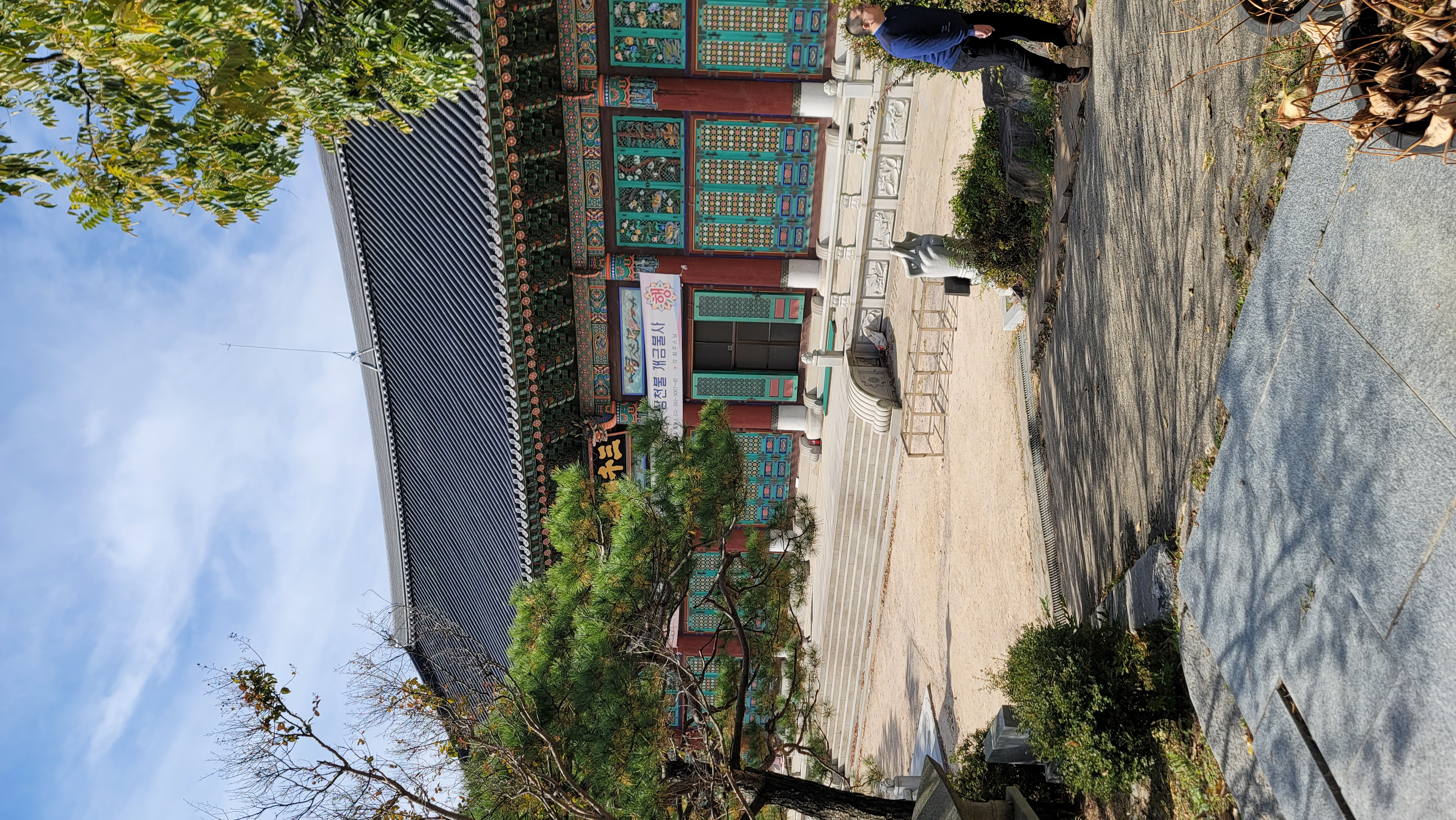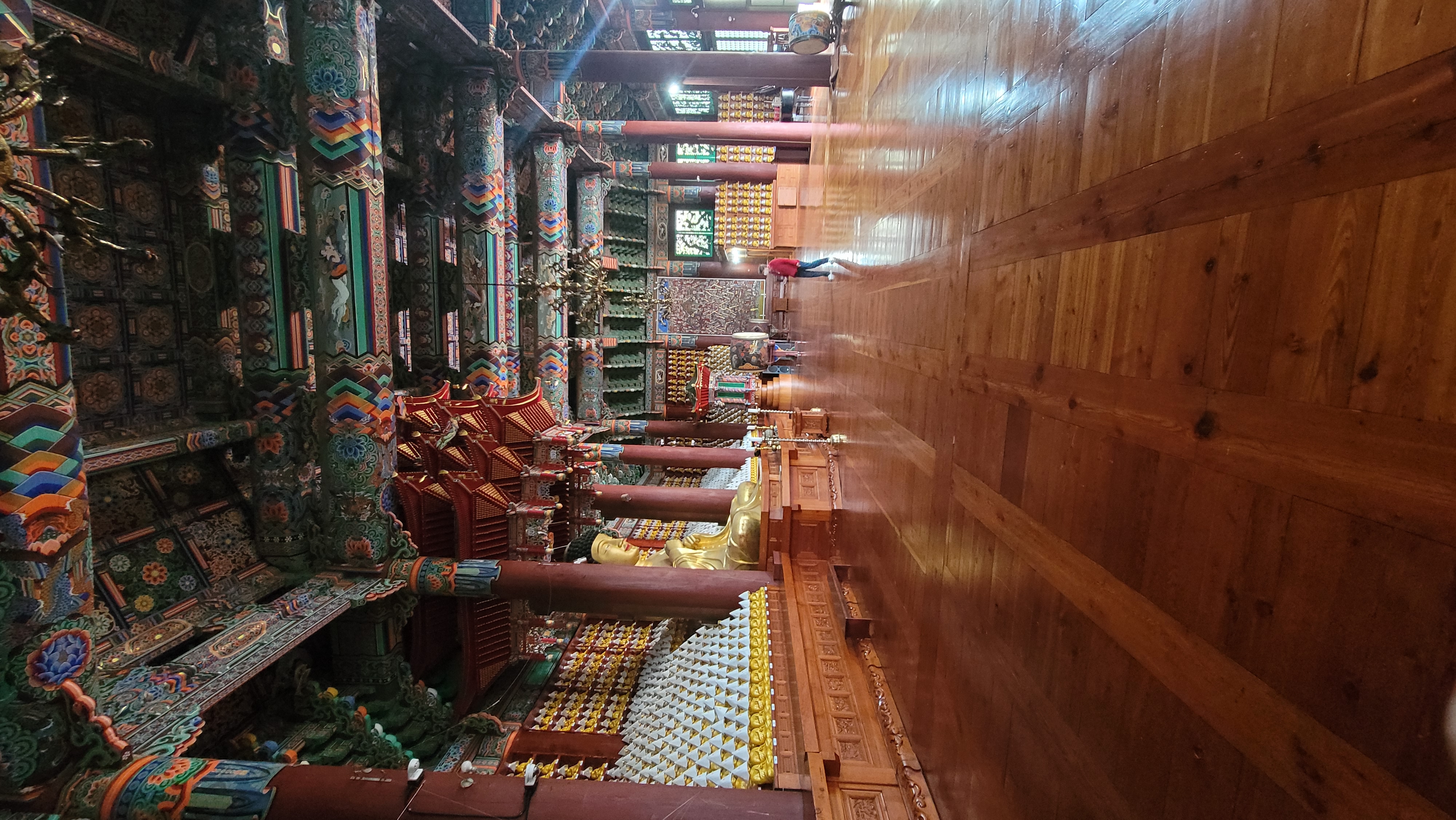Bongwon Temple on:
[Wikipedia]
[Google]
[Amazon]
Bongwon Temple (or Bongwonsa) is a South Korean 

 In the summer of 2004, it was discovered that serial killer Yoo Young-Cheol had buried around eleven bodies of his victims near the temple.
More than 50 monks live at the temple and are engaged in education and social welfare work.
In the summer of 2004, it was discovered that serial killer Yoo Young-Cheol had buried around eleven bodies of his victims near the temple.
More than 50 monks live at the temple and are engaged in education and social welfare work.
 These are the 16
These are the 16
Temple website
Religious organizations established in the 9th century Buddhist temples in Seoul Taego Buddhist temples Seodaemun District 9th-century establishments in Korea 9th-century Buddhist temples Religious buildings and structures completed in 889 {{Buddhist-temple-stub
Buddhist
Buddhism ( , ), also known as Buddha Dharma and Dharmavinaya (), is an Indian religion or philosophical tradition based on teachings attributed to the Buddha. It originated in northern India as a -movement in the 5th century BCE, and ...
temple in Bongwon-dong
Bongwon-dong is a legal '' dong'', neighbourhood of the Seodaemun-gu district in Seoul, South Korea and is governed by its administrative dong, Sinchon-dong's office.
Bongwon-dong has the Bongwon-Temple(Bongwonsa) built by Great master Doseon (8 ...
, Seodaemun-gu, Seoul
Seoul (; ; ), officially known as the Seoul Special City, is the capital and largest metropolis of South Korea.Before 1972, Seoul was the ''de jure'' capital of the Democratic People's Republic of Korea (North Korea) as stated iArticle 103 of ...
, near Yonsei University
Yonsei University (; ) is a private research university in Seoul, South Korea. As a member of the " SKY" universities, Yonsei University is deemed one of the three most prestigious institutions in the country. It is particularly respected in th ...
.
Situated to the northeast of the university on the hillside of Ahn Mountain, this is the head temple of the Taego Order
The Taego Order or Taego-jong is the second largest order in Korean Seon, the Korean branch of Chan Buddhism.
Characteristics
Seonamsa is one of the head monasteries of the Taego Order, which includes over 8,000 monastics and 3,100 temples.
...
of Korean Buddhism. It was founded in 889 by Master Doseon and located on the current site of Yonsei University. It moved to its present location in 1748.
Part of the temple was destroyed in 1950 during the Korean War
, date = {{Ubl, 25 June 1950 – 27 July 1953 (''de facto'')({{Age in years, months, weeks and days, month1=6, day1=25, year1=1950, month2=7, day2=27, year2=1953), 25 June 1950 – present (''de jure'')({{Age in years, months, weeks a ...
. In 1966 a new hall was built, but this was later moved to another part of the city. In 1991, while a new Hall of 3000 Buddhas was being built, a fire destroyed the Main Buddha Hall, which was rebuilt in 1994.


 In the summer of 2004, it was discovered that serial killer Yoo Young-Cheol had buried around eleven bodies of his victims near the temple.
More than 50 monks live at the temple and are engaged in education and social welfare work.
In the summer of 2004, it was discovered that serial killer Yoo Young-Cheol had buried around eleven bodies of his victims near the temple.
More than 50 monks live at the temple and are engaged in education and social welfare work.
16 Arhat statues
In the garden of the Buddhist Temple one can find 16 white statues. These are the 16
These are the 16 Arhat
In Buddhism, an ''arhat'' (Sanskrit: अर्हत्) or ''arahant'' (Pali: अरहन्त्, 𑀅𑀭𑀳𑀦𑁆𑀢𑁆) is one who has gained insight into the true nature of existence and has achieved ''Nirvana'' and liberated ...
- the Enlightened ones. In Theravada
''Theravāda'' () ( si, ථේරවාදය, my, ထေရဝါဒ, th, เถรวาท, km, ថេរវាទ, lo, ເຖຣະວາດ, pi, , ) is the most commonly accepted name of Buddhism's oldest existing school. The school' ...
Buddhism and in Mahayana
''Mahāyāna'' (; "Great Vehicle") is a term for a broad group of Buddhist traditions, texts, philosophies, and practices. Mahāyāna Buddhism developed in India (c. 1st century BCE onwards) and is considered one of the three main existing br ...
Buddhism, the Arhat (saint) has attained enlightenment and may choose to guide others or not. The 16 Arhats are all pictured here representing their own paths to enlightenment - which may, or may not, be the same as someone else's. The Arhats here would be suggesting one should find one's own path instead of trying to follow another's.
With the 16 Arhats of Theravada Buddhism, the message is simply "I did this. You can do this too. Find your own way" while the same sort of saint as understood by Mahayana Buddhism would be saying, "I did this. You can do this too. Let me show you the way."
See also
* Doseon *Taego Order
The Taego Order or Taego-jong is the second largest order in Korean Seon, the Korean branch of Chan Buddhism.
Characteristics
Seonamsa is one of the head monasteries of the Taego Order, which includes over 8,000 monastics and 3,100 temples.
...
*List of Buddhist temples in Seoul
See also
*Korean Buddhist temples
*Korean Buddhism
References
*Jogye Order Official site* http://koreatemple.net/
* http://www.amita.net/webdir/main.php
*Jogye Order of Korean Buddhism
* http://eng.templestay.com/ {{DEFAULTSORT:Buddh ...
** http://eng.templestay.com/ {{DEFAULTSORT:Buddh ...
Korean Buddhist temples
Buddhist temples are an important part of the Korean landscape. This article gives a brief overview of Korean Buddhism, then describes some of the more important temples in Korea. Most Korean temples have names ending in ''-sa'' (사, 寺), which ...
* Korean Buddhism
External links
Temple website
Religious organizations established in the 9th century Buddhist temples in Seoul Taego Buddhist temples Seodaemun District 9th-century establishments in Korea 9th-century Buddhist temples Religious buildings and structures completed in 889 {{Buddhist-temple-stub